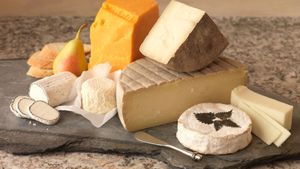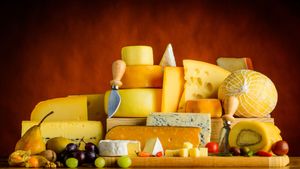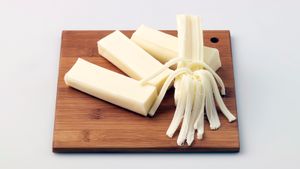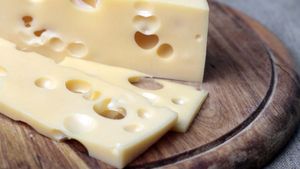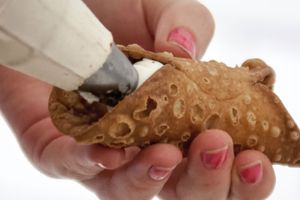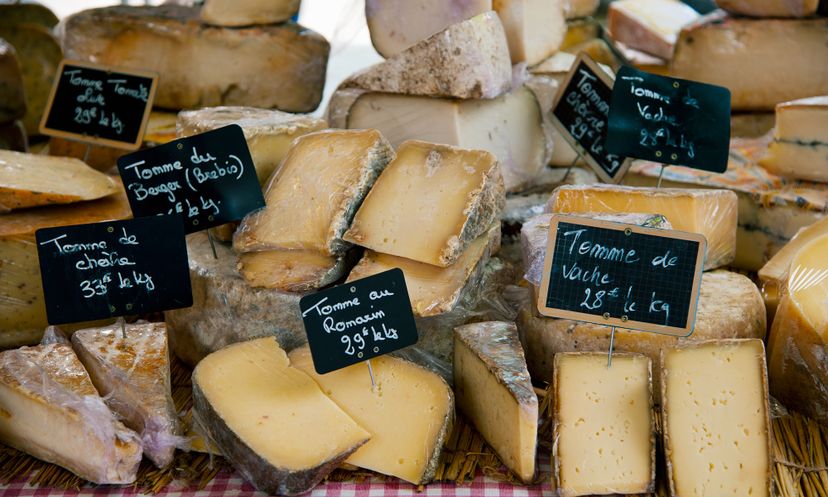
Cheese is everywhere. There's a theory that it can make just about anything -- from sandwiches and hamburgers to pasta and salads -- taste better. It's a classic topping for crackers, and it's hard to imagine pizza without warm, gooey mozzarella. When something is kitschy, we might refer to it as "cheesy." When you get your photo taken, you "say cheese." Fans of the Green Bay Packers football team wear foam cheese wedges on their heads.

Cate Gillon/Getty Images
A worker at a cheese shop in London cuts a round of Brie.
See more pictures of classic snacks.
Americans love their cheese: In 2005, Americans consumed an average of 31.4 pounds of cheese per person. The Greeks consume the most per person per year -- 58.7 pounds [source: Wisconsin Milk Marketing Board] -- but the United States is the world leader in cheese production, with 4.3 million metric tons in 2005 [source: U.S. Dairy Export Council]. There are several laws governing cheese sale and production in the United States. For example, many cheeses can't be sold in the United States because the FDA requires all raw-milk cheeses (cheese made with unpasteurized milk) to be aged at least 60 days [source: FDA]. Raw milk can contain bacteria that causes food-borne illnesses. Aged cheeses like Parmigiano-Reggiano are too salty, acidic and dry to hold bacteria.
Milk Isn't Orange ... so why are some cheeses yellow and orange? Originally, cheese could
be different shades of white, yellow or orange, depending on when it
was made and what the cows had eaten. In the spring and summer, cows
ate fresh grass and other plants that contained beta-carotene and vitamin D.
This resulted in yellow cheese. In the winter, cows ate hay instead, so
the cheese was pale. Cheese produced in the spring and summer was more
desirable, so cheesemakers began dyeing their cheese. Now it's become
more of a tradition to dye certain types of cheeses. |
Visit the cheese section of any grocery store and you'll notice a dizzying variety of shapes, sizes, textures, flavors and styles of cheese. All of it has a few things in common, though. Cheese is basically an easily transportable and preservable form of milk (usually from cows, but also from goats, sheep and other animals). Milk, in its natural state, is more than 80 percent water. Once you remove the water and compress the remaining solids, you have cheese [source: Jenkins]. Along the way, there are lots of different things that cheesemakers can do to alter the flavor and appearance of the cheese.
But exactly how does this happen? Why do we make (and eat) cheese that's stinky and moldy? Are Velveeta and Cheez Whiz real cheese? And why are those Packers fans called "cheeseheads," anyway? In this article, we'll learn all about the different types of cheese, how cheese is made, and about its place in our history and culture.
Advertisement





